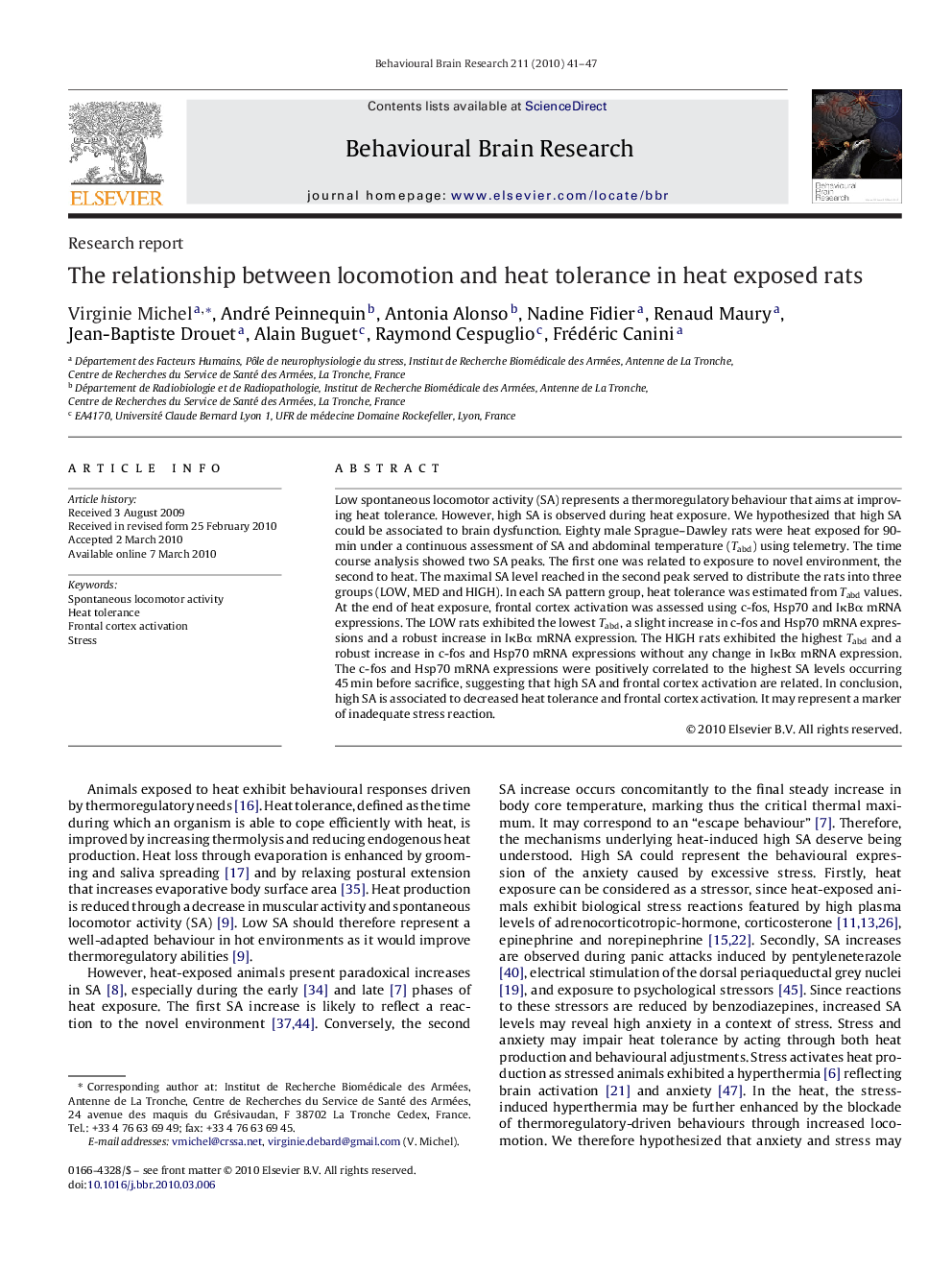| Article ID | Journal | Published Year | Pages | File Type |
|---|---|---|---|---|
| 4313839 | Behavioural Brain Research | 2010 | 7 Pages |
Abstract
Low spontaneous locomotor activity (SA) represents a thermoregulatory behaviour that aims at improving heat tolerance. However, high SA is observed during heat exposure. We hypothesized that high SA could be associated to brain dysfunction. Eighty male Sprague-Dawley rats were heat exposed for 90-min under a continuous assessment of SA and abdominal temperature (Tabd) using telemetry. The time course analysis showed two SA peaks. The first one was related to exposure to novel environment, the second to heat. The maximal SA level reached in the second peak served to distribute the rats into three groups (LOW, MED and HIGH). In each SA pattern group, heat tolerance was estimated from Tabd values. At the end of heat exposure, frontal cortex activation was assessed using c-fos, Hsp70 and IκBα mRNA expressions. The LOW rats exhibited the lowest Tabd, a slight increase in c-fos and Hsp70 mRNA expressions and a robust increase in IκBα mRNA expression. The HIGH rats exhibited the highest Tabd and a robust increase in c-fos and Hsp70 mRNA expressions without any change in IκBα mRNA expression. The c-fos and Hsp70 mRNA expressions were positively correlated to the highest SA levels occurring 45 min before sacrifice, suggesting that high SA and frontal cortex activation are related. In conclusion, high SA is associated to decreased heat tolerance and frontal cortex activation. It may represent a marker of inadequate stress reaction.
Related Topics
Life Sciences
Neuroscience
Behavioral Neuroscience
Authors
Virginie Michel, André Peinnequin, Antonia Alonso, Nadine Fidier, Renaud Maury, Jean-Baptiste Drouet, Alain Buguet, Raymond Cespuglio, Frédéric Canini,
